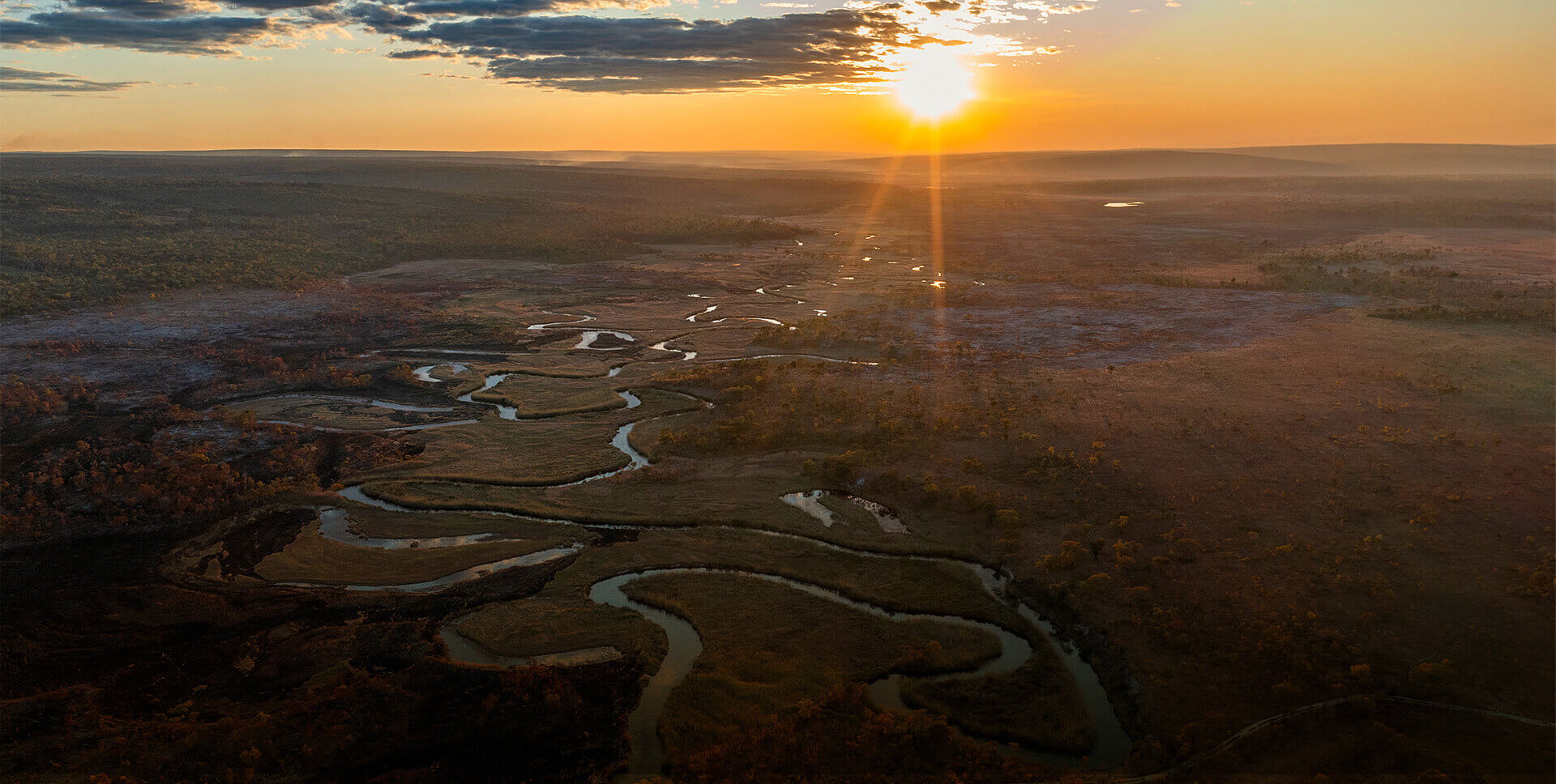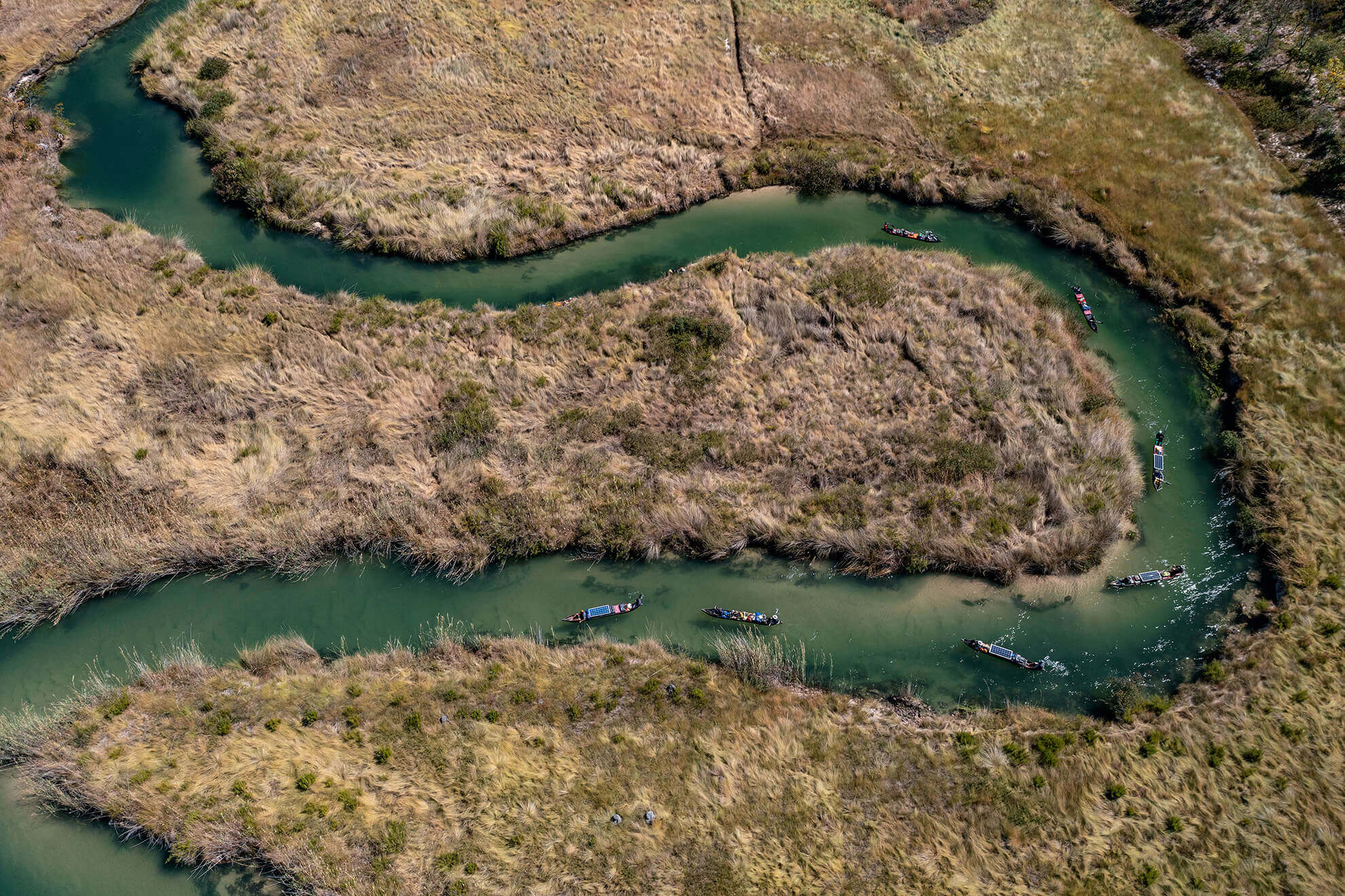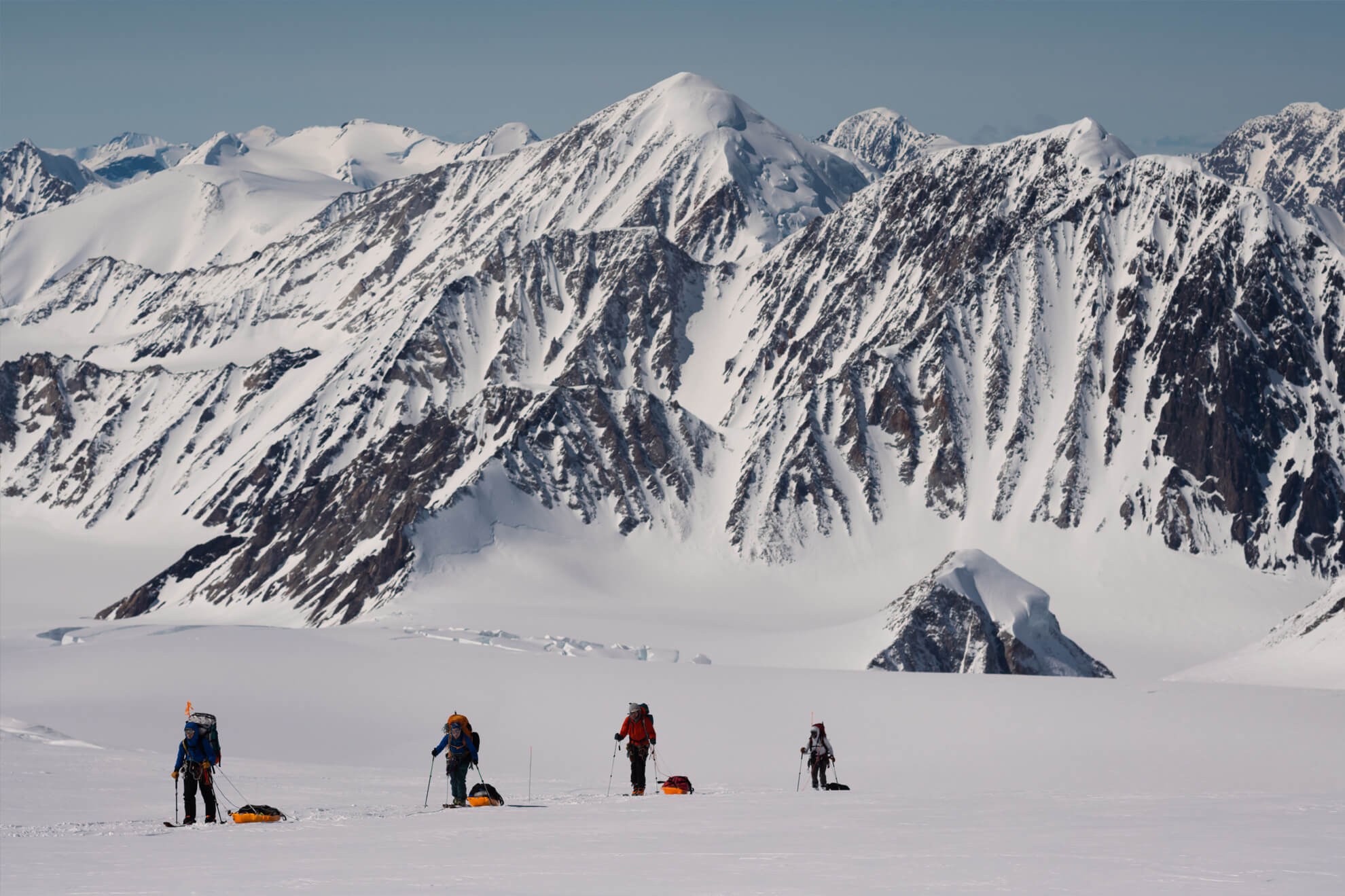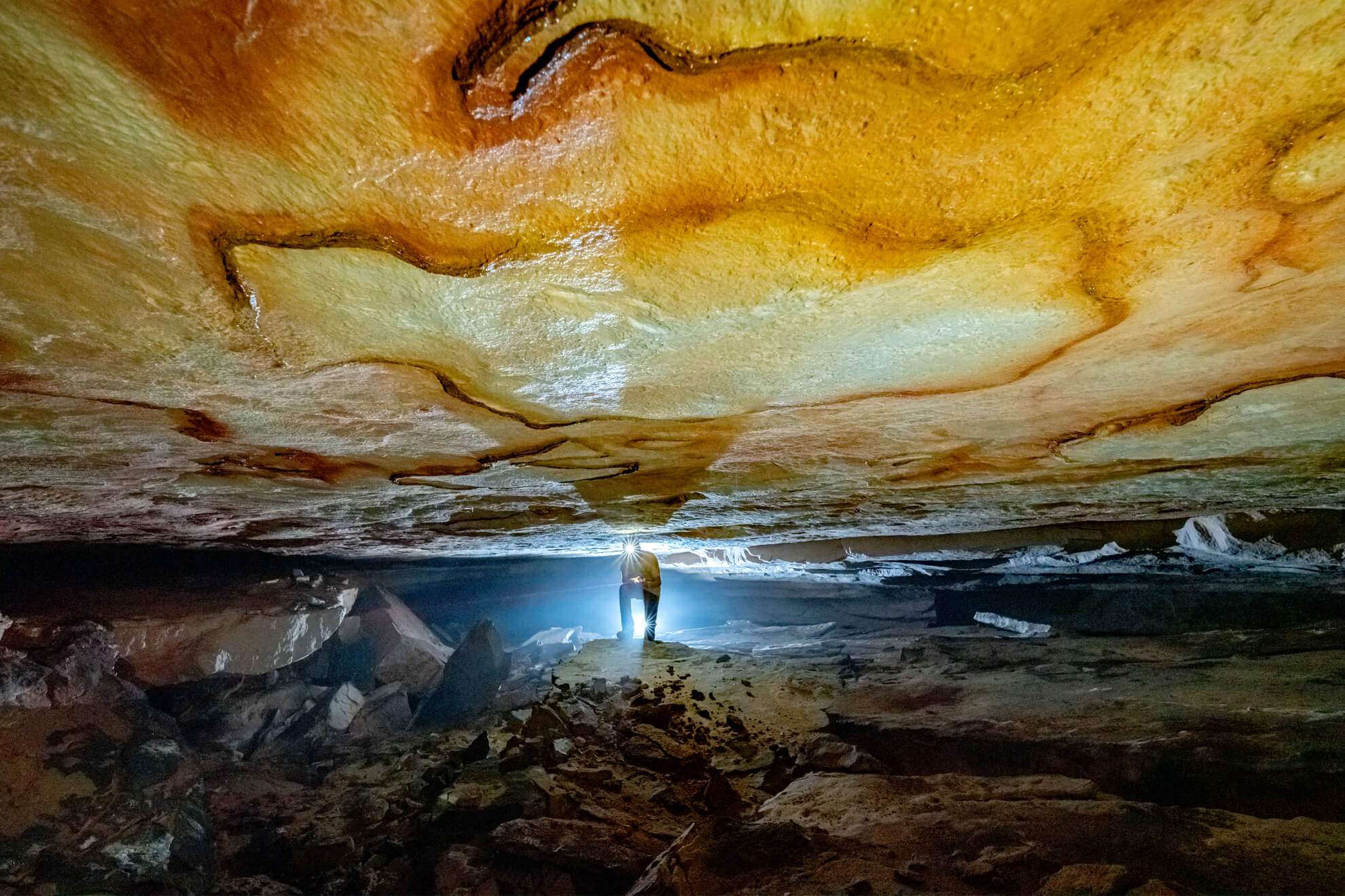Explorers venture to uncharted
rivers, forests, mountains and glaciers
to protect Earth for future generations

•Expeditions to Africa’s Zambezi River, Chile and Argentina’s neglected landscapes, Canada’s Mount Logan and Swiss Alps’ melting glaciers aim to tackle climate change
•Rolex’s Perpetual Planet Initiative supports worldwide discoveries, research and data collection to find solutions to the planet’s pressing problems and help safeguard its future
April 25, 2024
Globalisation has helped humans to travel to all parts of the world, but there are still some areas on planet Earth that remain untouched and largely unknown. These remote places are either too inaccessible for most people to reach, or have been left environmentally degraded from overuse.
Yet it is crucial that people restore and protect these territories. The survival of future generations may potentially depend on knowledge gained from exploring such overlooked areas.
We hear from four of today’s explorers and conservationists, supported by Rolex’s Perpetual Planet Initiative, and their efforts to find solutions that will help safeguard our planet.
Traversing Africa’s
vital life source
Steve BoyesSouthern Africa


Southern Africa’s Zambezi River, which meanders through Zambia, Angola, Namibia, Botswana, Zimbabwe and Mozambique before flowing into the Indian Ocean, serves the area’s wildlife and about 400 million people. Yet much about this vital life source, including its precise origin, remain unknown to science.
This is exactly what drove South African conservationist Steve Boyes, a Rolex Perpetual Planet Initiative partner, to set off on his expedition. “It is strange to believe that the source of the mighty Zambezi is unproven and undocumented, so we’ve been doing that scientifically,” Boyes says.
Steve Boyes
South African conservationist
For us, it’s a voyage of new discovery. It is 21st-century exploration and that is an astonishing thing

Conservationist Steve Boyes started his expedition to document the source of Southern Africa’s Zambezi River eight years ago. Photos: National Geographic/Jennifer Guyton
With support from Rolex, his team began their journey on the Lungwebungu River – which Boyes believes to be the Zambezi’s true source – while navigating their mekoro, traditional dugout canoes which are common in the region.
Learning more about the river’s sources and unique ecosystems can help scientists and local communities to protect these areas and the river in the future, and also build resilience against climate change, he says.
“Water provides security for people, wildlife [and] ecosystems into the future. It is incredibly important that we protect the source.”
While on the expedition, Boyes’ team covered 12,000km (7,450 miles) while carrying out river surveys – stopping every 10km to document the surrounding habitats with photographs and drone footage, take water quality measurements and make notes about the aquatic vegetation and organisms found at each site.
The team still have another 40,000km of river surveys across Africa to complete this decade. “We’ll be doing grant-giving to encourage local teams and other scientific teams to help us in this effort,” Boyes says. “My entire life is built around these expeditions, and no, I’m never going to stop.”
Rewilding landscapes
of southern Chile
and Argentina
Kristine TompkinsSouthern Chile
and Argentina


In the 1990s, American Kristine Tompkins left her high-flying corporate career behind to join her late husband, Doug, founder of climbing and camping equipment brand, The North Face, to help protect the landscapes of southern Chile and Argentina. The couple’s large-scale conservation projects mainly involved them buying land left devoid of its former rich biodiversity by its use for intensive sheep, cattle and timber farming.
“We had the idea [that] if we buy this land, it would take it out of the threat of production,” Tompkins, former CEO of outdoor-apparel retailer, Patagonia, says. “Maybe we can donate it and make new national parks – something that belongs to all Chileans.”
The couple bought Chile’s third-largest ranch and later other land and, with the help of local scientists and volunteers, started to restore the area. Tompkins donated the land to the Chilean government in 2018, and it now forms part of Patagonia National Park, which is one of Chile’s most important eco-restoration and rewilding projects.
When the couple first travelled to northern Argentina in 1997, they realised key wildlife species were missing from Iberá, which forms the world’s second-largest freshwater wetlands. They decided not only to preserve what remained, but also to help to reintroduce native species. “That changed the nature of our work,” Tompkins says.
Kristine Tompkins
Conservationist
Photo: Adam Amengual
We need to be in the business of creating fully functional ecosystems

Patagonia National Park is one of Chile’s most important eco-restoration and rewilding projects. Meanwhile, the Rewilding Argentina team have successfully reintroduced jaguars within the Iberá freshwater wetlands. Photos: Rolex/Sofía López Mañán
Tompkins Conservation has created two offshoots, Rewilding Chile and Rewilding Argentina, both supported by Rolex and its Perpetual Planet Initiative, to facilitate its work in the two countries. The Rewilding Argentina team have identified 10 different species to be reintroduced, including giant anteaters, jaguars, pampas deer, red-and-green macaws, ocelots and giant otters, with each one serving a unique role in the country’s ecosystem.
“Over the last 30 years, we’ve been able to create 13 new national parks, covering over 15 million acres [6 million hectares],” Tompkins says. “However, the thing that makes me the proudest is the team members who now have become Rewilding Chile and Rewilding Argentina.
“You can’t possibly defend these parks and these territories if you don’t have local communities directly benefiting from them, and taking on a sense of ownership.”
Uncovering past
climate stories within
Canada’s icy summit
Alison CriscitielloCanada


Mount Logan, the highest mountain in Canada, known for its rugged wilderness, is located near the border between the territory of Yukon and the US state of Alaska. On its summit sits a plateau covered with ice that is more than 400 metres (1,310 feet) deep.
American National Geographic Explorer Alison Criscitiello, an ice core scientist and director of the Canadian Ice Core Lab at the University of Alberta, is determined to uncover the climate stories held within that ice that span many thousands of years.
“Mount Logan’s plateau has an enormous bowl that is 20km long with unusually deep ice for the top of a huge mountain,” she says. “It’s been gathering snow and not melting for close to 30,000 years. The oldest non-polar Arctic ice in the world is sitting up there. It’s really important for telling us something about palaeoclimate [past climate] that we don’t already know.”
Alison Criscitiello
Ice core scientist
No matter what you’re doing at that altitude, you don’t really recover and you don’t heal

Alison Criscitiello led a team of scientists to the summit plateau of Mount Logan, Canada’s highest peak, during the National Geographic and Rolex Mount Logan Expedition. Photos: National Geographic/Leo Hoorn
The National Geographic and Rolex Mount Logan Perpetual Planet Expedition is an ambitious endeavour not for the faint-hearted. Criscitiello and her team of adventurous scientists and mountaineers had to climb up Mount Logan to a height of 6,000 metres, then drill and collect an ice core from the summit.
“The team is really critical,” she says. “They had to specialise in their fields, but with a really strong high-altitude mountaineering background. And that cuts out everyone except a few people.”
Although the drill equipment was flown up by helicopter, Criscitiello and her team had to physically climb up to the plateau – which took 10 days of skiing and climbing – so their bodies could slowly acclimatise and be able to work at such an altitude. On arrival at the summit they had to quickly start work – setting up the drill, and performing radar surveys to narrow down and confirm the best drill site.
“No matter what you’re doing at that altitude, you don’t really recover and you don’t heal,” she says. “You just sort of slowly deteriorate.”
Despite facing many challenges, including having to prevent the extracted ice from fracturing because of the change in pressure as it was brought to the surface, the team succeeded. “We drilled a 327-metre-deep ice core, which is ridiculous!” Criscitiello says.
Back in her laboratory in Edmonton, Criscitiello and her colleagues began to carefully cut, take images of, and process the ice – and analyse it for a range of species left in volcanic and wildfire ash and marine aerosols deposited on the ice from the sea. “Ice cores are cylinders of ice that we drill down in ice sheets and glaciers to tell us something about past climate,” she says. “Looking into the past allows us to predict the future.”
Dangerous search
inside glaciers in the
Swiss Alps
Francesco SauroSwitzerland


Experts have long warned that alpine glaciers are melting and disappearing because of global warming. Francesco Sauro, an Italian geologist and a Rolex Awards for Enterprise Laureate, is investigating how meltwater is permeating into Switzerland’s Gorner Glacier – the second biggest in the Swiss Alps.
“We are studying how meltwater is infiltrating inside the ice and then melting the glacier from inside,” says Sauro, who has studied the depths of caves around the world, from caverns beneath the Amazon rainforest to hidden realms in remote islands of the Atlantic Ocean.
Unlike other explorers, Sauro and his team do not have the luxury of time. “It’s a really fast-evolving situation and the places we are studying today will probably be completely gone next year,” he says. “The caves where we are working now in the darkness will be open to the surface and the rocks will see the sunlight.”
Francesco Sauro
Geologist
It’s very important to track down whatever is happening here

Francesco Sauro, a Rolex Awards Laureate, is studying how meltwater is getting inside Switzerland’s Gorner Glacier and melting it from within. Photos: La Venta/Alessio Romeino
The rapidly shifting landscape means Sauro’s work is not only urgent, but also treacherous. His most recent expedition to the Gorner Glacier was undertaken in the northern hemisphere’s 2022 summer during peak melt season, when the highest volume of water flows through the caves. The ice is also at its most unstable at this time, which meant that there was a real possibility of collapse. Sauro and his team were the first explorers to attempt the mission.
Specialised drones that can withstand the harsh, wet and icy environment were used to reach areas inside the alpine glacier’s underground caverns and tunnels that the team could not access themselves. “We have to be really careful and find a balance where we can go to take our data and instead where we have to send technologies like drones to take the data for us,” he says.
Sauro says he remains motivated to continue his work and feels privileged to be able to use cutting-edge science to study and better understand such fragile parts of our planet. “It’s very important to track down whatever is happening here,” he says.
This article is part of a four-episode series, Preservers of our natural world, which highlights the work of organisations and individuals supported by Rolex and its Perpetual Planet Initiative to safeguard our planet’s future for generations to come.